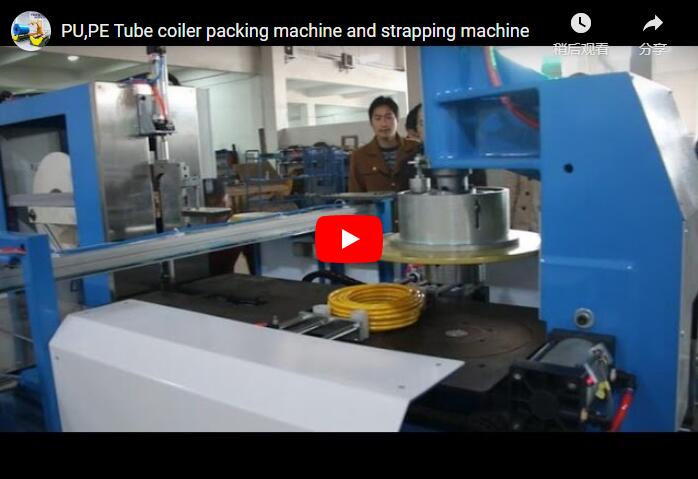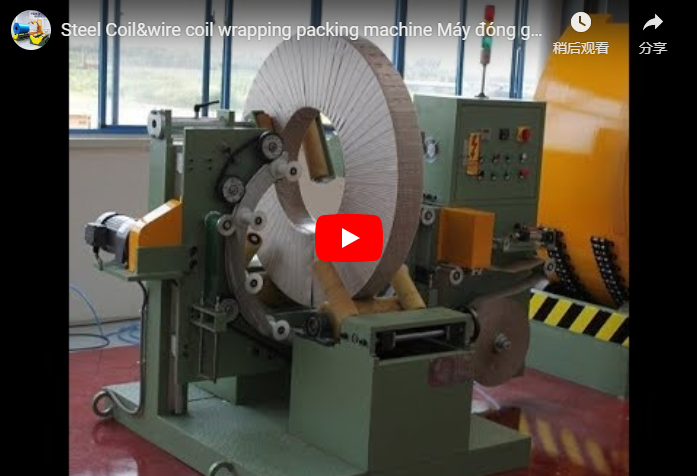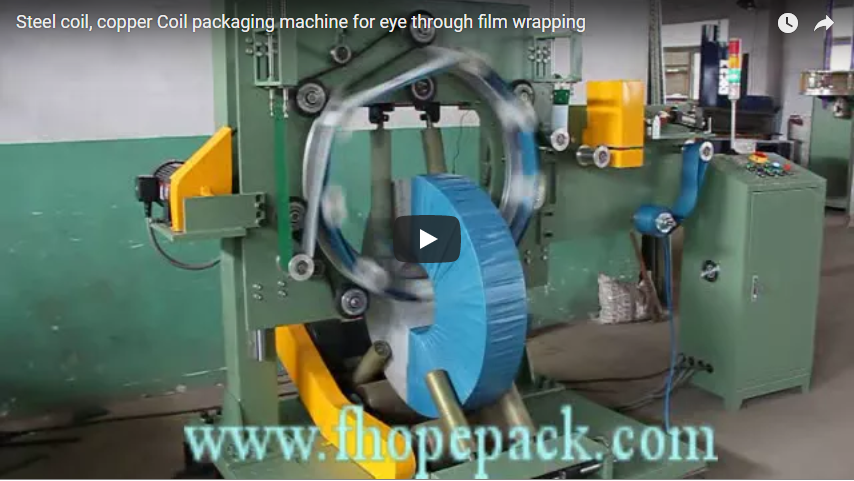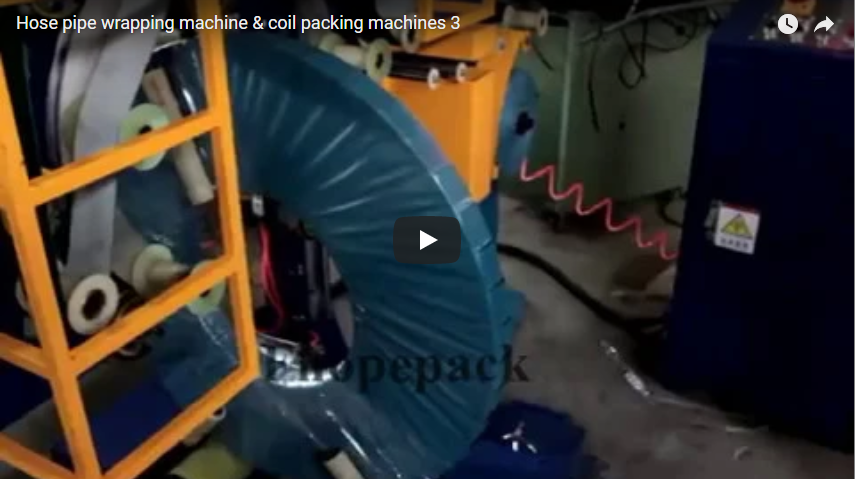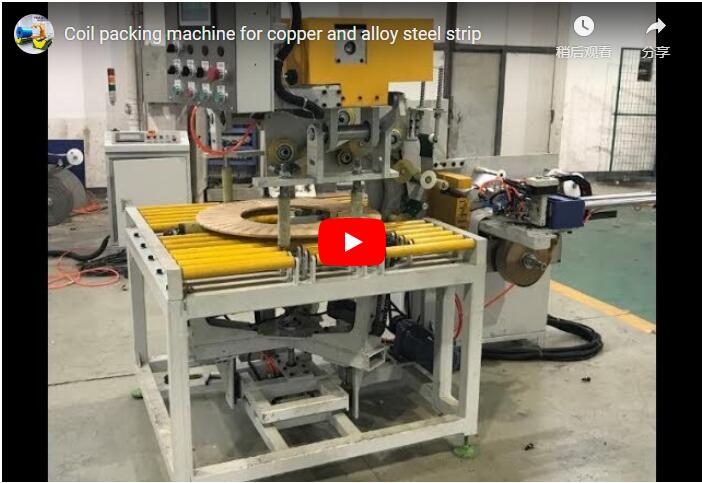Analyzing PE Film Application in Vertical Coil Wrapping Systems
1. Introduction to Vertical Coil Wrapping with PE Film
This article examines the application of Polyethylene (PE) film in vertical coil wrapping machines, focusing on systems designed for packaging materials such as steel, copper, and wire coils. We will delve into the operational parameters, technical specifications, and practical considerations for implementing this packaging method in an industrial setting. The video above demonstrates a typical operational cycle.
2. Operational Challenges in Manual Coil Packaging
Traditional manual packaging methods for metallic coils present several operational hurdles:
- Low Throughput: Manual wrapping is inherently time-consuming, limiting overall packaging speed and production output.
- Labor Dependency: The process often requires multiple skilled operators, increasing labor costs and reliance on specific personnel.
- Inconsistent Wrap Quality: Achieving uniform tension and overlap manually is difficult, potentially compromising package integrity and protection.
- Floor Space Utilization: Manual stations typically require a significant operational footprint for staging, wrapping, and temporary storage.
- Safety Concerns: Manual handling, lifting, and rotating heavy coils introduce risks of musculoskeletal injuries and accidents. Consistency requires vigilance, and the potential for human error remains a factor.
Addressing these points is crucial for improving efficiency and safety in coil handling operations.
3. Semi-Automatic Coil Wrapper Configuration and Specifications
Semi-automatic vertical coil wrapping systems using PE film offer a configurable solution adaptable to various operational needs. Key customizable parameters often include:
- Coil Inner Diameter (ID): Typically adjustable within a range, e.g., 500 mm to 900 mm.
- Coil Outer Diameter (OD): Accommodates various sizes, e.g., 800 mm to 1500 mm.
- Coil Height/Width: Handles different coil widths, e.g., up to 800 mm standard, with custom options.
- Coil Weight Capacity: Designed for specific load ranges, commonly up to 10 metric tons, though higher capacities are possible based on machine design.
- Wrapping Material: Primarily designed for PE stretch film, but compatibility with other materials like VCI (Volatile Corrosion Inhibitor) film or woven materials may be possible. Consult material compatibility data for specific film types.
- Control System: Typically utilizes a Programmable Logic Controller (PLC) for managing wrapping cycles, tension, and overlap. Common brands include Siemens, Allen-Bradley, or Mitsubishi.
- Human-Machine Interface (HMI): Often a touchscreen panel allowing parameter adjustments, recipe storage, and diagnostic feedback. Multilingual support is common.
Careful specification based on the range of coils processed is essential for effective implementation.
4. Operational Features and Performance Characteristics
Modern semi-automatic coil wrappers provide several key operational capabilities:
- Wrapping Speed: Capable of processing a significant number of coils per hour (e.g., 20-30 cycles typical, depending on coil size and wrap configuration), greatly exceeding manual rates.
- Controlled Film Application: Adjustable film tension and carriage speed ensure consistent stretch and overlap, optimizing material usage and package security. Film delivery systems often feature pre-stretch capabilities (e.g., up to 250-300%) to maximize film yield.
- Automation Level: Semi-automatic systems require operator intervention for loading/unloading and cycle initiation, but the wrapping process itself is automated. Fully automatic lines with integrated conveyors are available for higher throughput needs.
- Safety Integration: Machines are typically equipped with safety features like emergency stop buttons, safety interlocks on access doors, overload protection for motors, and potentially light curtains or safety scanners depending on the configuration and local regulations (e.g., adherence to ISO 13849 safety standards).
- Operational Noise: Designed to operate within acceptable industrial noise limits, typically below 75 dB during the wrapping cycle.
- Uniform Finish: Provides a consistent, professional appearance, enhancing product presentation and protection against environmental factors like dust and moisture.
5. Considerations for Implementation and Maintenance
When integrating a coil wrapping system, consider:
- Material Handling: How coils will be loaded onto and unloaded from the machine (e.g., forklift, C-hook, upender, conveyor).
- Film Selection: Choosing the appropriate PE film gauge, width, and properties (e.g., cling, puncture resistance, UV stability) for the specific application.
- Operator Training: Ensuring personnel are proficient in operating the HMI, adjusting parameters, performing film roll changes, and understanding safety procedures.
- Preventive Maintenance: Regular inspection and maintenance of rollers, motors, belts, and electrical components are crucial for reliable long-term operation. Following the manufacturer's recommended maintenance schedule is advised.
6. Frequently Asked Questions (FAQs)
1. How adaptable is the machine to different coil dimensions during a production run?
- Most machines allow quick adjustments via the HMI for different pre-programmed recipes or manual parameter changes to accommodate varying coil ID, OD, and width within the machine's specified range. Significant changeovers might require minor mechanical adjustments.
2. What core safety mechanisms are typically built-in?
- Standard safety features include multiple emergency stop buttons, motor overload protection, guarded moving parts, and often heat cut-off mechanisms for the film sealing/cutting unit (if equipped). Advanced options can include safety interlocks and presence sensing devices.
3. How is consistent film tension achieved across different coil sizes?
- The PLC controls the film carriage and rotation speed, often using feedback loops (e.g., load cells or motor current monitoring) to dynamically adjust film payout and maintain the pre-set tension level, regardless of the coil's changing diameter during wrapping.
4. What are the typical power and utility requirements?
- Requirements vary by model but often involve 3-phase power (e.g., 480V/60Hz or 380V/50Hz) and potentially compressed air for certain functions like film cutting or clamping. Check manufacturer specifications for exact needs.
For detailed technical specifications tailored to specific coil dimensions and throughput requirements, consulting with equipment manufacturers is recommended.

